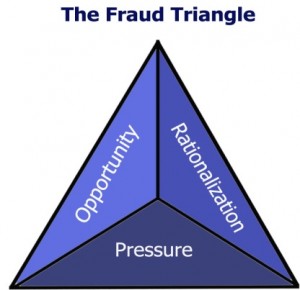Opportunities for Tax Savings Using a Section 1031 Exchange
by Morgan Norris
What is a Section 1031 exchange? 
An exchange using Section 1031 of the Internal Revenue Code occurs when you sell an investment property and subsequently purchase another similar property within a certain amount of time. This exchange is also known as a “like-kind” exchange, and can be used to postpone paying tax on the gain from the property sale if all the IRC requirements surrounding the exchange are met. A Section 1031 exchange is reported on Form 8824, Like-Kind Exchanges.
Who qualifies?
Owners of investment and business property; including individuals, C corporations, S corporations, Partnerships, LLC’s and trusts can all qualify to take part in the Section 1031 exchange.
What are the requirements?
There must be an exchange of properties. Examples of property exchanges include: a simultaneous swap of one property for another or a deferred property exchange. A deferred exchange allows you to dispose of a property, and then identify and purchase another property within a certain window of time. Two time limits must be met in order to avoid a taxable event during a deferred exchange. The first time limit requires you to identify potential replacement properties within 45 days from the date of the original property sale. Your identification of the potential property must be in writing and must follow certain additional rules in order to be valid. The second time limit requires that the replacement property be received and the exchange completed no later than 180 days subsequent to the sale of the original property or the extended due date of the income tax return for the tax year in which the relinquished property was sold, whichever is earlier. The replacement property must be substantially the same as the property identified in the original paperwork issued. There is no limit on how many times, or how frequently you can participate in a Section 1031 exchange.
Ways in which taxable gain may result
The exchange can include like-kind property exclusively, or a combination of like-kind property and cash, liabilities and/or non-like-kind property. Exchanges consisting of cash, debt relief or non-like-kind property may trigger some taxable gain in the year of the exchange. Taxable gain may also be generated from taking possession of cash from the sale of the relinquished property. A Section 1031 exchange requires that a third party, such as a qualified intermediary, hold the proceeds from the original sale until the full exchange is complete. Your real estate agent, broker, accountant or attorney may not act as your qualified intermediary. Additional stipulations are also placed on the qualified intermediary.
Depreciation recapture may also be the result of certain exchanges. This is taxed as ordinary income, and is usually the result of swapping items that are not necessarily of like-kind, such as improved land with a building for unimproved land without a building.
The fine print
A properly constructed Section 1031 exchange allows one to defer; but not forgive, taxable gain. It is pertinent that the basis in each additional property purchased be tracked until the last replacement property is eventually sold. Once this occurs, taxable gain will be calculated using the basis schedule.
Morgan ([email protected]) is a tax senior at Langdon & Company LLP. She has experience with individual and corporate tax preparation. Please contact our office if we can provide additional information.




 What is tax-related identity theft?
What is tax-related identity theft?




 CPAs are required to begin using SSARS 21 for financial statements with periods ending December 15, 2015 and thereafter; however, the standard allows for early implementation. The
CPAs are required to begin using SSARS 21 for financial statements with periods ending December 15, 2015 and thereafter; however, the standard allows for early implementation. The 








 Analysis of these changes:
Analysis of these changes:

